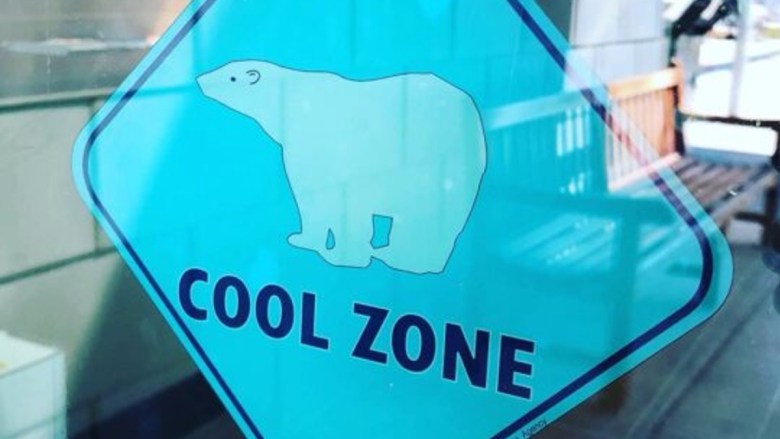Harmful Algal Bloom Threatens California's Coastal Wildlife

Table of Contents
Understanding Harmful Algal Blooms (HABs) in California
What are HABs and how do they form?
Harmful Algal Blooms, also known as toxic algae blooms or red tides (though not all HABs are red), are rapid increases in the populations of harmful algae in water. This proliferation isn't just a visual spectacle; it's a serious ecological problem. HAB formation is a complex process influenced by several factors:
- Nutrient Enrichment (Eutrophication): Excess nutrients, primarily nitrogen and phosphorus, fuel algal growth. These nutrients come from various sources including agricultural runoff containing fertilizers, sewage discharge, and stormwater carrying pollutants from urban areas.
- Climate Change: Rising water temperatures and altered ocean currents, linked to climate change, create favorable conditions for certain HAB-forming species to thrive. Warmer waters can accelerate algal growth rates and extend bloom seasons.
- Phytoplankton Dynamics: HABs are caused by specific types of phytoplankton, microscopic marine plants. Certain species produce potent toxins that accumulate in the food web.
Types of HABs affecting California's Coast
California's coastal waters are susceptible to various HABs, each with its own toxic profile:
- Pseudo-nitzschia: This diatom species produces domoic acid, a neurotoxin that accumulates in shellfish and can cause Amnesic Shellfish Poisoning (ASP) in humans and marine mammals. It's prevalent along the central and northern California coast.
- Alexandrium: This dinoflagellate genus produces saxitoxin, another potent neurotoxin responsible for Paralytic Shellfish Poisoning (PSP). Areas along the central and southern California coast are affected.
- Other species: Several other harmful algae species contribute to HAB events in California, causing diverse impacts on marine life and posing varied threats to human health. These blooms can vary geographically and seasonally.
Impact of HABs on California's Coastal Wildlife
Effects on Marine Mammals
HABs pose a significant threat to California's iconic marine mammals:
- Sea otters: Highly susceptible to domoic acid poisoning, sea otters exhibit neurological symptoms, leading to impaired coordination, seizures, and ultimately death. HABs have been implicated in significant sea otter mortality events.
- Seals and sea lions: These marine mammals can also suffer from domoic acid poisoning, exhibiting similar neurological symptoms. Mass strandings of sick or dead seals have been linked to HABs.
- Whales: Larger marine mammals like whales can ingest contaminated prey, leading to domoic acid accumulation and potential health consequences. HABs may contribute to weakened immune systems and reduced reproductive success in whale populations.
Effects on Fish and Other Marine Life
The effects of HABs extend far beyond marine mammals:
- Fish kills: Toxins produced by HABs can directly kill fish, leading to significant losses in fish populations and impacting commercial and recreational fisheries.
- Invertebrate mortality: HABs decimate shellfish populations, affecting the entire food web. This can lead to reduced food availability for fish, seabirds, and marine mammals.
- Ecosystem imbalance: The widespread mortality caused by HABs disrupts the delicate balance of the marine ecosystem, potentially leading to long-term consequences for biodiversity and ecosystem health. The economic impact on fisheries due to closures and reduced catches is substantial.
Human Health Concerns
Consuming contaminated shellfish is the most significant human health risk associated with HABs:
- Shellfish safety: Regular monitoring programs test shellfish for toxins, and advisories are issued when levels exceed safety thresholds. It's crucial to check local health advisories before consuming shellfish harvested from affected areas.
- Recreational activities: Contact with HABs during swimming or other water activities can sometimes cause skin irritation or respiratory problems. Beach closures may be implemented during significant bloom events.
- Public health advisories: State and local health agencies issue warnings and advisories to inform the public about HAB events and associated risks.
Mitigation and Management Strategies for HABs in California
Monitoring and Early Warning Systems
Effective management of HABs requires robust monitoring and early warning systems:
- HAB monitoring: Scientists employ various methods to detect and monitor HABs, including satellite imagery, water sampling, and advanced sensor technology.
- Early warning system: Data from monitoring programs is used to develop predictive models and issue timely warnings to protect human health and marine life.
- Water quality monitoring: Ongoing assessment of water quality parameters helps identify conditions conducive to HAB formation and guide preventative measures.
Reducing Nutrient Runoff
Addressing the root causes of HABs is crucial:
- Nutrient management: Implementing best management practices in agriculture, including reducing fertilizer use and improving irrigation techniques, can minimize nutrient runoff into waterways.
- Sustainable agriculture: Transitioning to more sustainable agricultural practices, such as cover cropping and integrated pest management, can further reduce nutrient pollution.
- Wastewater treatment: Improving wastewater treatment processes can remove excess nutrients before discharge into the environment. Effective stormwater management systems can also reduce pollution from urban runoff.
Conclusion: Protecting California's Coast from the Threat of Harmful Algal Blooms
Harmful Algal Blooms pose a severe and escalating threat to California's coastal ecosystem and its valuable wildlife. The impacts extend far beyond the immediate mortality of marine life, disrupting entire food webs and threatening human health. Continued research, enhanced monitoring, and comprehensive mitigation strategies are essential to address this growing challenge. To protect California's beautiful coastline, we must all contribute: learn more about harmful algal blooms, support initiatives to reduce nutrient pollution, and promptly report suspected HAB occurrences to your local health authorities. By working together, we can safeguard this precious resource for future generations and lessen the devastating impact of harmful algal blooms on California's coastal environment.

Featured Posts
-
 Ticketmaster Virtual Venue El Futuro De La Compra De Entradas
May 30, 2025
Ticketmaster Virtual Venue El Futuro De La Compra De Entradas
May 30, 2025 -
 Metallica Announces Double Header At Dublins Aviva Stadium In June 2026
May 30, 2025
Metallica Announces Double Header At Dublins Aviva Stadium In June 2026
May 30, 2025 -
 San Diego County Forecast Cool Wet And Windy
May 30, 2025
San Diego County Forecast Cool Wet And Windy
May 30, 2025 -
 Stjernes Kritik Af Dansk Chef En Sag Om Mangel Pa Respekt
May 30, 2025
Stjernes Kritik Af Dansk Chef En Sag Om Mangel Pa Respekt
May 30, 2025 -
 Pengalaman Berkendarai Jet Ski Premium Kawasaki Ulasan Lengkap
May 30, 2025
Pengalaman Berkendarai Jet Ski Premium Kawasaki Ulasan Lengkap
May 30, 2025
